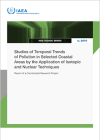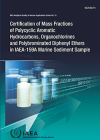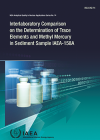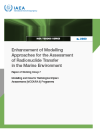Sustained pollution can damage coastal and marine ecosystems and jeopardise the livelihood of entire communities. By applying cutting-edge nuclear and isotopic techniques, the IAEA helps Member States accurately monitor pollution, minimise the impact of incidents and mitigate their effect on local populations.
Coastal and marine pollution
It is estimated that 80 per cent of pollutants in the marine environment originate from land. Some of the hazardous substances, such as toxic heavy metals, persistent organic compounds (including pesticides and industrial chemicals), hydrocarbons and radioactive substances released from industrial, agricultural, municipal and mining activities ultimately enter the marine environment through surface water and groundwater.
To assist Member States in addressing coastal and marine pollution, the IAEA has developed a number of science-based tools and techniques that help decision-makers protect the marine environment. The Agency maintains environment laboratories in Monaco and Seibersdorf, Austria, that use nuclear and isotopic techniques to study pollution processes and fingerprint pollutants’ sources.
Coastal pollution and seafood safety
Contaminants that end up in coastal waters may accumulate in marine organisms through the food chain, degrading an ecosystem’s resilience and threatening human health through the consumption of contaminated seafood. In recent years, there has also been an increase in the occurrences of harmful algal blooms, which can produce toxins that cause foodborne illnesses such as the deadly paralytic shellfish poisoning and ciguatera fish poisoning disease. These incidents impact fisheries, aquaculture, tourism and the use of drinking and recreational waters.
Through its environment laboratories, the IAEA plays a key role in research and training on how to monitor hazardous contaminants and biotoxins in seafood, through for example the use of the radio-ligand receptor binding assay, an analytic procedure used to detect toxins during harmful algal blooms. Similarly, as part of a partnership with the Regional Organization for the Protection of the Marine Environment, one of the United Nations Environment Programme’s regional seas programmes, the IAEA’s Monaco-based Environment Laboratories analysed oyster and marine sediment samples from the Persian Gulf to determine levels of radionuclides, trace elements, organic contaminants and biotoxins related to harmful algal blooms.
Plastics
Some plastics accumulate in the oceans because of their slow degradation rates. Some estimates place as many as 5.25 trillion plastic particles weighing a total of 250,000 tons floating in the world’s oceans, including micro-plastics (plastics smaller than 5mm). They originate from the weathering and disintegration of larger plastic debris, from pellets used in the manufacturing of plastics, from additives in cleaning and personal care products, and from synthetic clothing.
Due to their small size, micro-plastics can be mistaken for plankton and ingested by marine animals, including bivalves (mussels, clams) and fish. Together with the pollutants that have accumulated on them, they can be transferred through the food chain. Radiolabelled tracers can help understand how microplastics get contaminated by organic pollutants and how they transfer such contaminants to marine organisms.
Similarly, the study of natural archives such as sediment cores, corals and shells reveals the history of pollution incidents in marine ecosystems. The IAEA’s Radiometrics Laboratory uses for example lead-210 and caesium-137 based geochronologies to reconstruct a record of environmental changes recorded in sediment and coral cores. This approach helps evaluate contamination accumulation rates in coastal and marine ecosystems.








